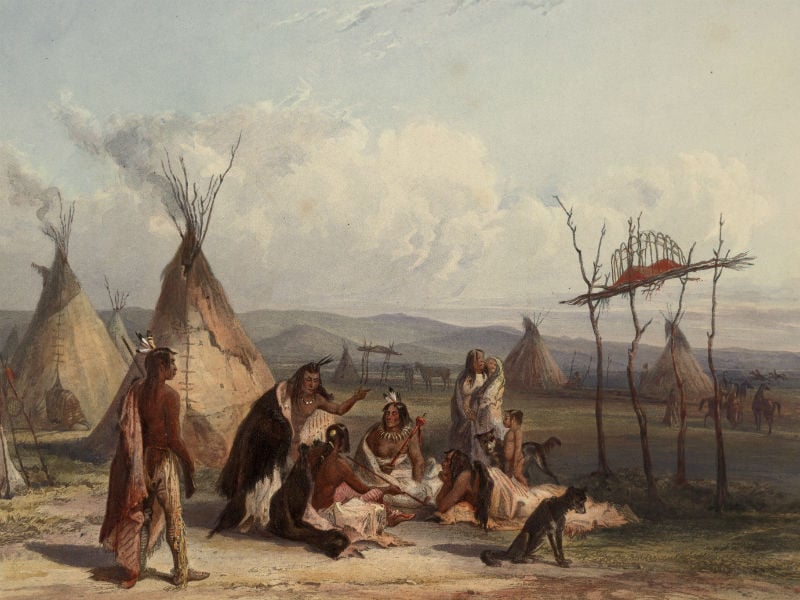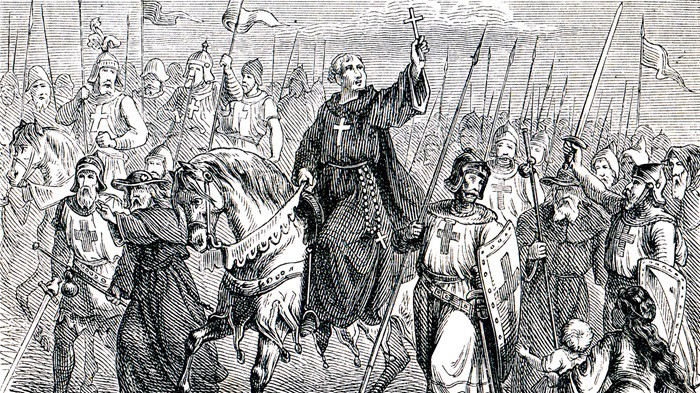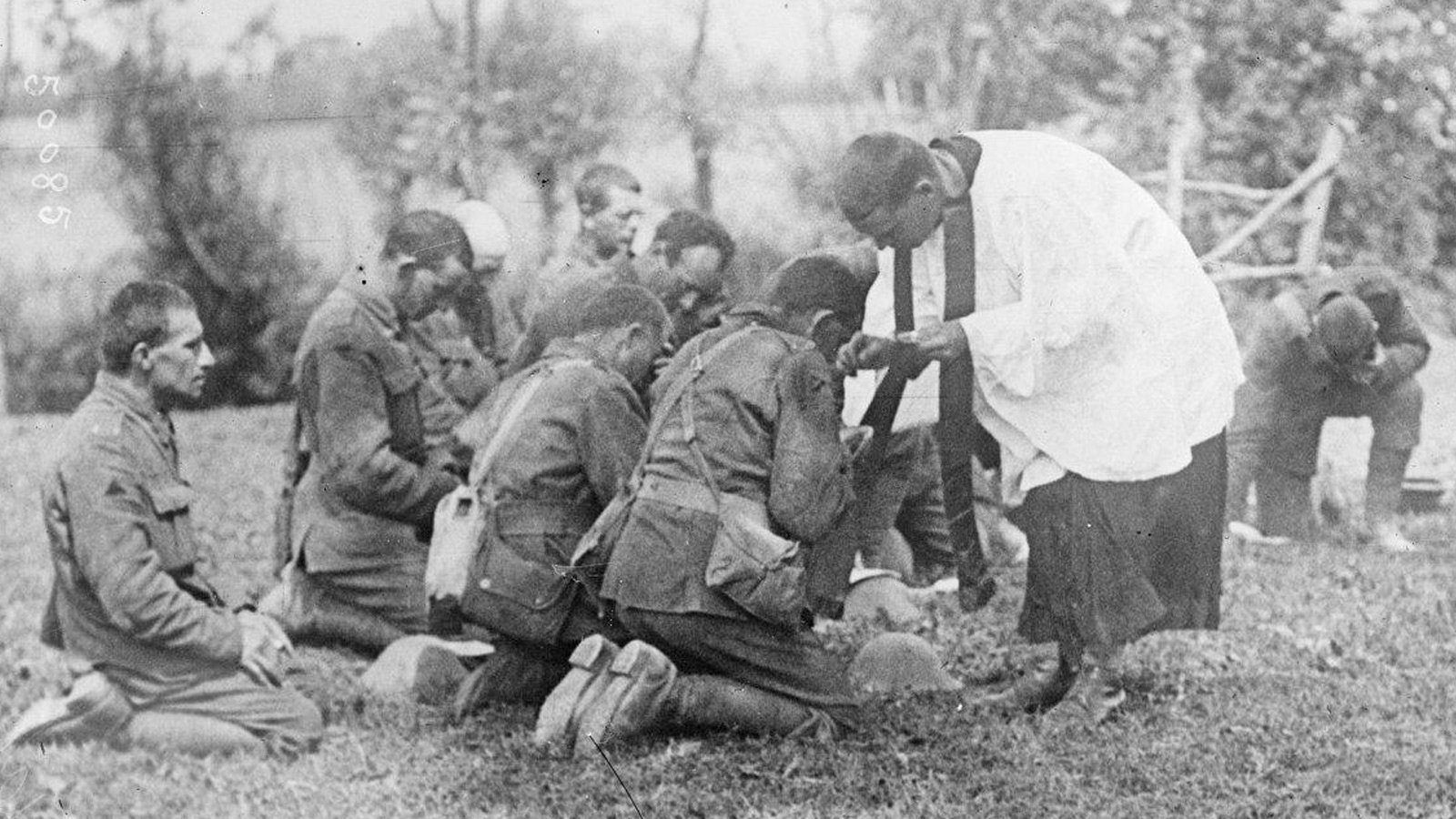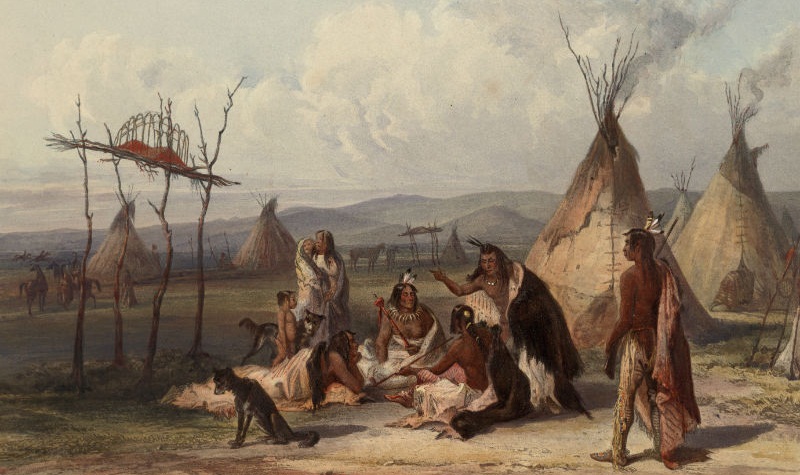Some American Indian Beliefs About an Afterlife

When the European invasion of North America began there were more than 600 autonomous Indian nations in the region, each with its own religion. While many of these aboriginal religions focused on the harmony of present-day life rather than obtaining a reward or punishment in an afterlife, many of them did have a concept of some kinds of existence after death. A few of these concepts are briefly described below.
Concerning beliefs regarding an afterlife among Plains Indians, Charles Eastman, in Light on the Indian World: The Essential Writings of Charles Eastman (Ohiyesa), writes: “The idea of a ‘happy hunting-ground’ is modern and probably borrowed, or invented by the white man.”
One example of life after death is found among the Pueblo Indians of North America who see life after death as the same as before death: the deceased journey to a town where they join a group with which they were associated in life. In commenting about Pueblo Indian resistance to Christianity, anthropologist Elsie Clews Parsons, in her book Pueblo Indian Religion, writes: “The Pueblo idea of life after death as merely a continuation of this life is incompatible with dogmas of hell and heaven. In this life the Spirits do not reward or punish; why should they after death?”
In his book American Indians and Christian Missions: Studies in Cultural Conflict, religion professor Henry Bowden reports that “the Pueblo cosmology did not recognize a place of eternal punishment.”
Going from the American Southwest to the Cheyenne Indians of the Northern Plains, we find that the souls of the dead Cheyenne travel along the Milky Way (“The Road of the Departed”) to the place of the dead. Father Peter J. Powell, in his book Sweet Medicine: The Continuing Role of the Sacred Arrows, the Sun Dance, and the Sacred Buffalo Hat in Northern Cheyenne History, reports: “For the Cheyennes, there is no hell or punishment after life on earth.” In his book The Cheyenne Indians: Their History and Lifeways, George Bird Grinnell writes: “The spirit of the dead man found the trail where the footprints all pointed the same way, followed that to the Milky Way, and finally arrived at the camp in the stars, where he met his friends and relatives and lived in the camp of the dead.”
In a similar vein, writing about the Omaha Indians of the Central Plains (The Omaha Tribe), ethnographers Alice Fletcher and Francis La Flesche report: “There does not seem to have been any conception among the Omaha of supernatural rewards or punishments after death.”
Most of the Indian tribes of New England envisioned afterlife as a life similar to the one they were currently living. There was no concept of reward for virtue or punishment for bad deeds. Religion professor Henry Bowden writes: “The Massachusetts [Indians] expected to triumph over death by finding new opportunities in another realm, beyond the grave, where individual accomplishments could flourish again with undiminished vigor.”
In his book Indian New England Before the Mayflower, Howard Russell writes: “The soul of the departed was believed to journey to the southwest, there to share the delights of the wigwam and fields of the great god Kanta (or Tanto or Kautautowit), where abundance reigns and ancestors offer welcome and feasting.”
For the Narragansett Indians in the Northeast, death was seen as a transition between two worlds. At the time of death, the soul would leave the body and join the souls of relatives and friends in the world of the dead. The world of the dead was felt to be in the southwest where the supernatural Cautantowwit and the ancestors lived. Here the souls of the deceased would spend an afterlife similar to life on earth. Passing through the gates guarded by a ferocious dog, the souls of the dead find a paradise without worry or pain. They find the storehouses filled with corn, beans, and squash; the strawberries are always in seasons; and the clams are succulent.
Not all cultures have a well-defined or well-described afterlife. With regard to life after death, this is an issue of little concern for most traditional Navajo Indians. They feel that they will find out when they die and in the meantime this is something they have no way of knowing anything about and therefore they should not waste time thinking about it. The Navajo cultural orientation is towards life, toward making this life happier, more harmonious, and more beautiful.


